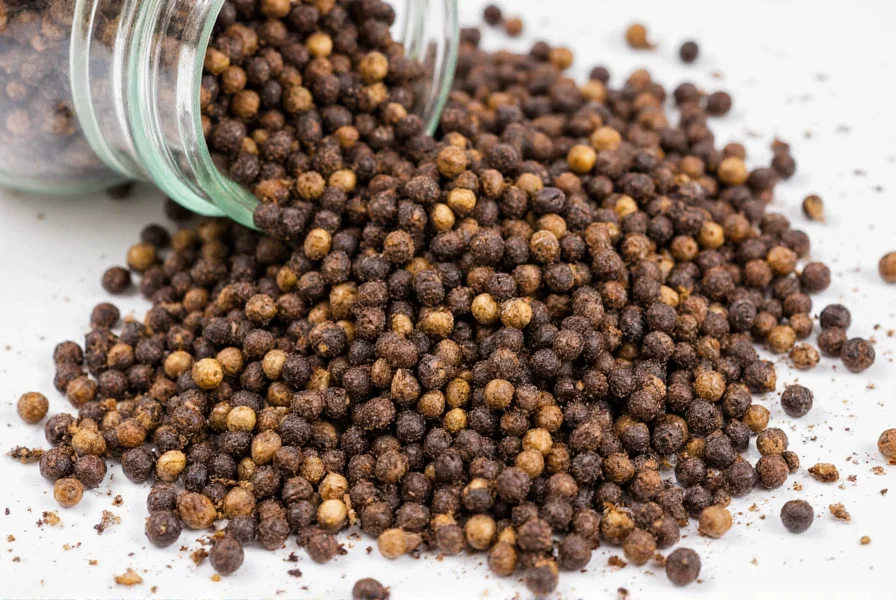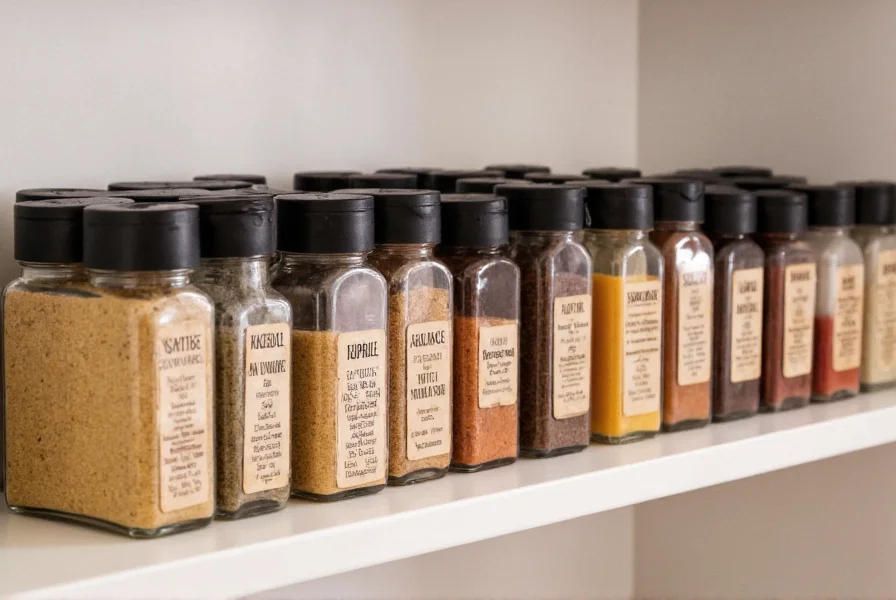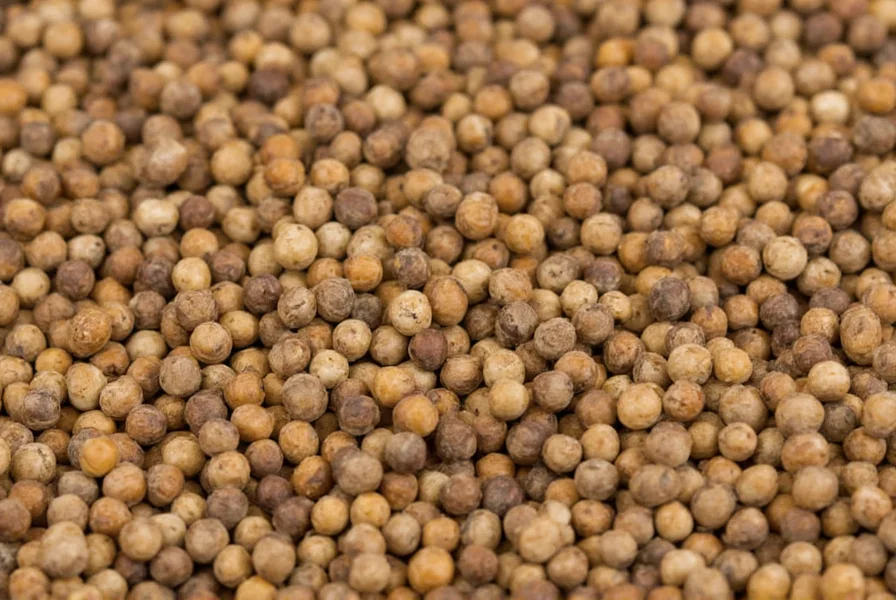Ground pepper is a kitchen staple found in nearly every household, but many home cooks wonder about its longevity. Unlike perishable foods that spoil visibly, spices like ground pepper undergo a more subtle decline in quality. Understanding the shelf life of ground pepper helps ensure your dishes maintain their intended flavor profile while avoiding wasted ingredients.
Understanding Ground Pepper Shelf Life
Unlike whole peppercorns, which can retain their potency for up to 5 years when properly stored, ground pepper has a significantly shorter shelf life due to its increased surface area exposed to environmental factors. The grinding process breaks down the protective outer layer of peppercorns, accelerating the degradation of volatile oils responsible for pepper's characteristic heat and aroma.
When stored in optimal conditions—away from heat, light, and moisture—ground black pepper typically maintains acceptable quality for 2-3 years. However, noticeable flavor degradation often begins within the first 12-18 months. White and red ground peppers follow similar timelines, though some varieties may degrade slightly faster due to different processing methods.

Signs Your Ground Pepper Has Degraded
Unlike spoiled dairy or meat products that pose immediate health risks, degraded ground pepper won't make you sick but will significantly impact your cooking. Look for these key indicators that your ground pepper has lost its optimal quality:
- Faded color - Fresh ground black pepper should be dark brown to black; faded pepper appears lighter and grayish
- Weak aroma - Rub a small amount between your fingers; if you can't detect a sharp, pungent scent, potency has diminished
- Reduced heat - Taste a tiny amount; degraded pepper lacks the characteristic bite of fresh pepper
- Clumping - Moisture exposure causes pepper to form hard clumps, indicating compromised quality
- Mold presence - Rare but possible if exposed to significant moisture; discard immediately if mold appears
How Long Ground Pepper Lasts Under Different Conditions
| Storage Method | Optimal Shelf Life | Flavor Quality Timeline |
|---|---|---|
| Airtight container in cool, dark pantry | 2-3 years | Peak flavor: 6-12 months; Gradual decline: 12-24 months; Minimal flavor: 24+ months |
| Original plastic container | 1-2 years | Peak flavor: 3-6 months; Noticeable decline: 6-18 months |
| Refrigerated in airtight container | 3-4 years | Peak flavor: 12-18 months; Slower decline than pantry storage |
| Exposed to light and air | 6-12 months | Rapid flavor loss beginning within weeks |
Proper Storage Techniques for Maximum Shelf Life
The key to extending ground pepper's shelf life lies in minimizing exposure to the four main degradation factors: air, light, heat, and moisture. Follow these storage recommendations to preserve flavor and potency:
- Transfer to airtight containers - Glass jars with tight-sealing lids outperform plastic containers and the original packaging. Ceramic containers with silicone seals also work well.
- Store in a dark location - Keep ground pepper in a cabinet away from stovetops, ovens, and windows. Light exposure accelerates flavor degradation.
- Maintain consistent temperature - Avoid temperature fluctuations by storing away from heating vents and appliances that generate heat.
- Prevent moisture exposure - Never store ground pepper above the sink or near the dishwasher. Consider adding a food-safe desiccant packet to the container in humid climates.
- Use clean, dry utensils - Introducing moisture when scooping pepper significantly reduces shelf life.

Food Safety Considerations for Ground Pepper
From a food safety perspective, properly stored ground pepper rarely becomes unsafe to consume. The extremely low moisture content creates an environment where bacteria and mold cannot thrive under normal conditions. However, certain situations warrant discarding ground pepper:
- Visible mold growth (discard entire container immediately)
- Signs of insect infestation
- Exposure to significant moisture that caused clumping and subsequent drying
- Unusual odors beyond simple loss of aroma (indicating possible contamination)
While consuming degraded ground pepper won't make you ill, it will fail to deliver the intended flavor in your cooking. For the best culinary results, replace ground pepper when you notice significant flavor loss, typically after 18-24 months of proper storage.
Maximizing Flavor in Your Cooking
Understanding ground pepper's shelf life helps you make informed decisions about when to replace your spice inventory. For dishes where pepper is a featured ingredient—like steak au poivre or freshly ground pepper pasta—using fresh, potent pepper makes a noticeable difference. In recipes where pepper plays a supporting role, slightly older pepper may still suffice.
Consider keeping a small amount of high-quality freshly ground pepper specifically for finishing dishes, while using older pepper for cooking applications where heat will further diminish its potency. This approach maximizes the value of your spice investment while ensuring optimal flavor in your finished dishes.
Frequently Asked Questions
Can you get sick from using old ground pepper?
No, properly stored ground pepper rarely becomes unsafe to eat due to its low moisture content. While it loses flavor and potency over time, it doesn't typically harbor harmful bacteria or mold unless exposed to significant moisture. The primary concern with old ground pepper is diminished flavor rather than food safety risks.
How can you tell if ground pepper is still good?
Test ground pepper by rubbing a small amount between your fingers and smelling it. Fresh pepper should have a strong, pungent aroma. You can also taste a tiny amount—good pepper will have noticeable heat. Visually, fresh ground black pepper should be dark brown to black; faded pepper appears lighter and grayish. If it lacks aroma, heat, or has changed color significantly, it's time to replace it.
Does ground pepper last longer in the refrigerator?
Yes, refrigeration can extend ground pepper's shelf life by 6-12 months compared to pantry storage, but only if stored in an absolutely airtight container. The refrigerator's cool, dark environment slows flavor degradation, but the higher humidity requires exceptional moisture protection. Allow refrigerated pepper to come to room temperature before opening to prevent condensation, which can cause clumping and accelerate spoilage.
Why does ground pepper lose flavor faster than whole peppercorns?
Grinding pepper dramatically increases its surface area, exposing more of the volatile oils responsible for flavor and aroma to air, light, and moisture. Whole peppercorns maintain their protective outer layer, which preserves these compounds. The grinding process essentially starts the degradation clock, which is why freshly ground pepper from whole peppercorns always delivers superior flavor compared to pre-ground versions.
What's the best container for storing ground pepper?
Dark glass containers with airtight seals provide the best protection for ground pepper. They block light completely and create an effective barrier against air and moisture. Ceramic containers with silicone seals are also excellent options. Avoid clear plastic containers, which allow light penetration and may absorb odors. Metal containers can work but may react with the acids in pepper over time, potentially affecting flavor.











 浙公网安备
33010002000092号
浙公网安备
33010002000092号 浙B2-20120091-4
浙B2-20120091-4